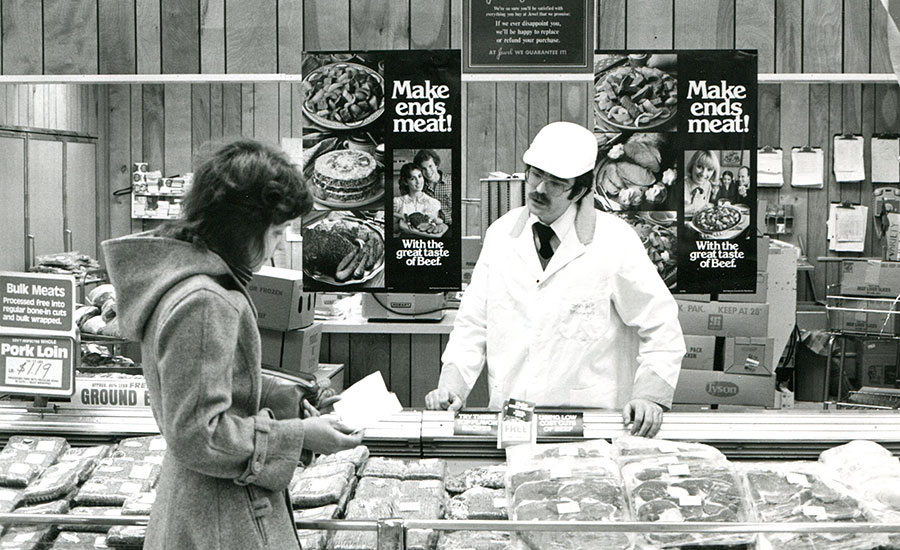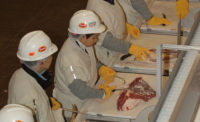Editor’s Note: The following is the fourth of six reports covering magazine highlights and major industry events during The National Provisioner’s 125 years in publishing.

When The National Provisioner (NP) began its 75th year as the premiere weekly meat trade publication in the United States on Jan. 1, 1966, Paul Simon’s and Art Garfunkel’s folksy “Sounds of Silence” became No. 1 on the Billboard Hot 100 that day. Twenty-five years later in early January 1991, Madonna’s much less folksy “Justify My Love” was No. 1.
Just as music radically changed during these years, so did American consumers — and particularly their demand for meat products.
|
Click here for more exclusive 125th anniversary coverage! |
“During that 25-year span, the U.S. experienced fragmentation/nichification of its consumer market in terms of meat preferences; a plunge in beef consumption [the Department of Agriculture recorded 78.1 lbs. in 1966 down to 66.6 lbs, in 1991]; as well as an enormous increase in poultry production [6,437 million lbs. in 1966 broiler production up to 19,591 million lbs. in 1991, according to the Economic Research Service/USDA],” says Maureen Ogle, Ames, Iowa-based historian and author of “In Meat We Trust” among other works. These were all changes NP chronicled during these years.
Although more American producers and packers also investigated global market potential, particularly the promising Pacific Rim, the big shift was from meat as a basic commodity to meat as the primary ingredient in value-added products.
“People didn’t just want chicken, they wanted TV dinners; frozen, diet entrées; microwaveable, meat-stuffed pockets — plus low-fat pork, lean beef, chicken wings and on to high-end organic, grass-fed beef,” Ogle adds. The average consumer hadn’t a clue how difficult it was for producers to raise livestock for packers, processors, grocers and the hotel, restaurant and institution (HRI) industry, which were trying to cope with thousands of consumer whims, Ogle says.
“The grocery/HRI industry, which is on the front line, put huge pressure on packers and producers to make foods consumers wanted,” she iterates.
Consumer nichification forced livestock producers and packers to accommodate demand, thus pork packers began contracting with hog farmers. Instead of traditional commodity hogs, these customers now wanted hogs with a very specific lean-to-fat ratio.
“They didn’t want commodity beef — they wanted lean beef and marbled beef,” Ogle says. “Producers who weren’t willing to alter their livestock production methods were basically out of luck. Livestock producers were caught between consumers on one side and packers, processors, grocers [and HRI] on the other.”
Growing pains
During that 25-year span, humane animal handling increased in importance for more consumers, customers and industry. Dr. Temple Grandin, world-renowned designer of humane livestock-handling systems and facilities, professor of animal science at Colorado State University and popular speaker on humane animal handling, was prominently featured and quoted in the pages of NP throughout her career — even prior to her receiving a Ph.D. in animal science from the University of Illinois in 1989. She recalls some darker, earlier days.
“I began working in the meat industry in the early 1970s,” Grandin says. “In the 1980s, plants increased line speeds. They made sudden expansions, and nobody knew how to run this [equipment at such high speeds]. And maintenance on much of the equipment was just terrible while some lines were understaffed. It was just ‘push, push, push, push, push!’
“Industry has greatly improved,” she adds. And improvement came about thanks in large part to Grandin’s pioneering work, such as developing the first center track restrainer for large cattle, which was installed in 1990 at the Cargill (Excel), Schuyler, Neb., beef plant.
Massive workload
Since its launch in 1891, NP remained a weekly magazine published each Saturday. Until the mid- to late 1980s, each issue was written by a handful of editors plus some high-profile contributing industry professionals ranging from meat company CEOs to leading academicians to popular daily newspaper food writers — without the help of computers or fax machines.
From 1966-1991, more NP articles highlighted the increasing number of new and expanded further automated slaughter, packing and processing plants; food-safety and pathogen detection plus treatment advances; research and development breakthroughs; new product and packaging developments; how to improve operations, marketing and employee performance; advancing poultry markets; growing global market opportunities; and seafood trends, among other topics.
As 1990 closed and the NP editorial staff prepared to celebrate 100 years in publishing in April 1991, little did they know how much industry, the world and especially NP would change and evolve during the next 25 years. NP




Report Abusive Comment